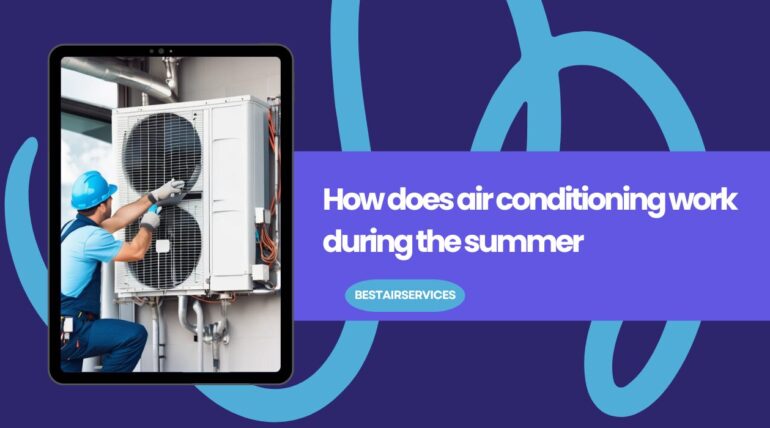
September 21, 2024
Many commercial spaces, particularly in the scorching summer, depend critically on air conditioning (AC). Although these systems exist in many shapes, sizes, and forms, their basic idea is extracting heat and humidity from the inside air and releasing it outside, therefore producing cool, refreshing air. But how exactly does this magical procedure occur? Let’s dissect the complexities of how does air conditioning work, with an eye on their mechanics and the physics underlying their cooling capacity.
The Fundamentals of Air Conditioning
Fundamentally, an air conditioner removes heat rather than merely dumps cool air into your commercial space. This reduces interior temperature, therefore improving the comfort of your living area. The mechanism absorbs heat, draws in heated air, and then expels it outside. Inside you now have colder air. Until the room achieves the temperature your thermostat has set, this cycle runs.
How Does Air Conditioning Work?
A few key components—the refrigerant, compressor, condenser coil, evaporator coil, and fan—round out the fundamental air conditioning operation. These components cooperate to enable heat exchange and maintain the coolness of your space. Here’s how the process of air conditioning work:
- Compressor: the refrigerant is a specialist cooling chemical which starts its journey in the compressor. The compressor pressurizes the refrigerant in its gaseous condition, therefore increasing both its temperature and pressure. The condenser coil gets this high-pressure, high-temperature gas next-hand.
- Condenser Coil: Located in the outside unit, the condenser coil is extremely important in turning refrigerant gas into a liquid. A fan draws outdoor air in as the gas passes through the coil, therefore helping to chill the refrigerant and condense it back into a liquid form. The heat absorbed by the refrigerant from the indoor air is released outside during this process.
- Evaporator Coil: Once refrigerant is chilled and condensed, it returns indoors to the evaporator coil situated in the air handler. The liquid refrigerant is ready to evaporate since it passes through an expansion valve which decreases its pressure. The refrigerant evaporates as it passes over the evaporator coil, so absorbing heat from the heated inside air. The air within your space cools under this influence.
- Fan: The indoor unit’s fan blows air across the cold evaporator coil, cools it, and then sends it down the ductwork to different rooms in your house. The refrigerant absorbs the heat from the interior air, converting it back into a gas that subsequently returns to the compressor to resume the cycle.
- Heat Release: Now once more a hot gas, the refrigerant leaves the space and returns to the compressor. Pressurization, condensation, evaporation, and heat absorption cycle until your space reaches the intended temperature.
Your air conditioning system’s ability to keep a comfortable environment even during the hottest summer days is a result of this constant loop of heat exchange.
Understanding Central Air Conditioning Systems
In UAE, most commercial spaces include split systems—that is, central air conditioning systems. Linked by copper tubing, these consist of two primary units: an interior and an outdoor unit. Whereas the indoor unit comprises the evaporator coil and fan, the outdoor unit holds the compressor and condenser coil. The commercial spaces have ductwork running through it that supplies cool air to different areas.
Central air conditioning systems serve purposes beyond only temperature control. Their regulation of air quality, humidity, and ventilation helps to make indoor surroundings more pleasant.
Important Parts of Central Air Conditioner Systems
A central air system consists mostly of these elements:
- Thermostat: Located within the space, the thermostat monitors the internal temperature and sends signals when cooling is required, therefore regulating the functioning of the system.
- Outdoor Unit: Comprising the compressor, condenser coil, and fan, outdoor units Copper tubing runs the refrigerant between the indoor and outdoor units.
- Indoor Unit: The evaporator coil and fan found in the interior unit move cool air around the space.
- Expansion Valve: This controls refrigerant entering the evaporator coil by expansion valve.
Ductwork: From the inside unit to several commercial spaces and back, it lets cool airflow.
The Two Simultaneous Actions of Air Conditioning
The basic type of the air conditioning process consists of two simultaneous actions: one within your commercial space and one outside.
- Inside the Space (Cold Side): Warm air is drawn from your commercial space and runs across the cold evaporator coil loaded with refrigerant on the cold side. The refrigerant absorbs heat from the inside air as it evaporates, so chilling it.
- Outside the Space (Hot Side): Now a hot gas, the refrigerant is compressed by the compressor and sent to the outdoor condenser coil, where it releases the absorbed heat and is condensed back into a liquid outside the commercial space.
This cycle keeps on till the thermostat finds the ideal temperature, preserving cool and pleasant surroundings.
A Detailed Look at the Cooling Process
- The Thermostat: Installed midway, the thermostat tracks air temperature and instructs the air conditioning system to turn on when the temperature increases.
- Air Collection and Filtering: The space draws warm air from which return ducts and filters remove dust, lint, and other particles.
- Cooling the Air: The air flows across the cold evaporator coil in cooling mode. The refrigerant absorbs the heat from the air, therefore chilling it as it evaporates.
- Air Distribution: The blower fan transports the cool air back via the ducting to the commercial spaces.
- Heat Expulsion: The heated refrigerant gas leaves the space and is squeezed into the outdoor unit using the condenser coil, therefore releasing heat into the outdoor air.
Repeat: Now a liquid, the refrigerant comes back to the interior unit to start the cycle once more.
Types of Air Conditioning Systems
Various structures and commercial spaces need various kinds of air conditioning systems. The three most often used systems are:
- Split-System Air Conditioners: The most often used duct split system air conditioners comprise an indoor and outdoor unit coupled with refrigerant lines. It provides single-stage, two-stage, and multi-stage systems, among other choices.
- Rooftop Units: For businesses with limited inside space, rooftop air conditioner units—which combine the compressor, condenser, and evaporator—are perfect. They are often installed on rooftops.
Ductless Air Conditioners: Designed for focused cooling without ducting, ductless air conditioners comprise one or more indoor units as well as outdoor units. Every indoor unit cools a designated region, hence, ductless systems are ideal for zoning and custom temperature control in several spaces.
Conclusion
Finally, knowing how air conditioning operates throughout the summer helps you value the technology maintaining the comfort and coolness of your commercial spaces. From split systems to ductless units, every system uses the same idea of eliminating heat and humidity from your indoor air. It’s equally important to choose a service company that guarantees quality installation and reliable maintenance if you want to find the best air conditioning system for your commercial spaces. Our area of expertise at BestAirServices is offering exceptional air conditioning solutions, including water chiller systems, rooftop package units, and split systems. BestAirServices guarantees effective and affordable cooling whether your need is for a new installation or routine maintenance, helping you to remain comfortable all summer long.


